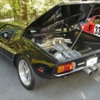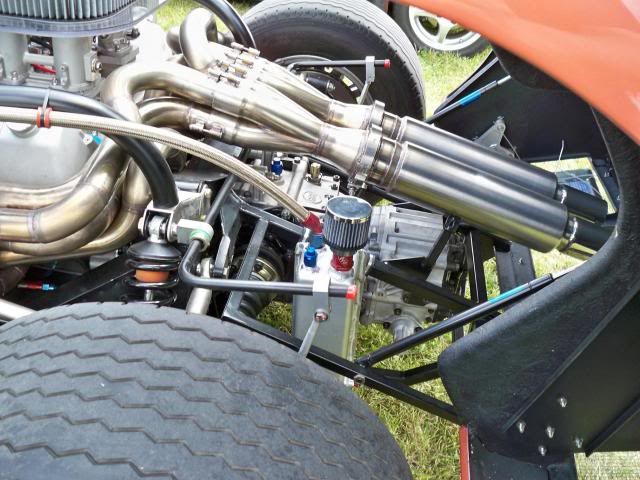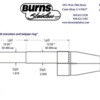quote:
Originally posted by Push1267:
I’ve started looking for an exhaust system for my pantera. It’s going to run a moderately tuned 427 winsor stroker (525 HP).
I’m a big fan of the 180s - love the look and sound and of course they supposedly cures the problems with HP-rubbing small diameter collectors and mufflers.
But does it really make sense on a car that I intend the drive regularly (as long as I use a heatshield) and will I see any performance benefits on a long stroke/ std bore winsor stroker over fx the typical 2.5 inch std style header/muffler system??
Also, I’ve read many of the treads on the subject here on the forum, but miss some comments on how they are to live with when the car is driven often or on longer trips.
Kristian
Kristian,
I'm working on a set for my car. I have a set on my GT40. I like them and other than possibly more engine compartment heat, I see no reason why they would be any more or less streetable than a conventional set up. I would strongly recommend ceramic coatings and I will also use stainless to further reduce the additional heat load in the engine compartment, and yes, shields to protect the paint on the decklid are highly recommended if not essential.
The stock Pantera mufflers (even GTS) are power robbers. Presuming those are what you presently have, at your power level, probably >25HP but <50HP could be expected. Many members have realized significant improvements simply by replacing their Ansa styls cans with Flowmasters or other performance mufflers. I doubt that 180s will produce substantial gains over upgraded mufflers in a conventional configuration.
The the optimal primary length is typically much shorter than what is physically possible with 180s. On the other hand, you do have a lot more space and length for a well designed merge collector and expansion cone as well space to package large free flowing mufflers that suit your desired sound levels, so in this sense, uprgaded performance over Pantera stockers is certainly to be expected. V-band clamps to attach the mufflers are common so swaps can be easily made.
It will be an experiment for me as I struggle looking at the back end of a Pantera without the Ansa style cans. -They just belong there. I will make inserts for the rear valance vacancies so the mod is easily reversible.
If properly constructed, the sound is something to behold when you come on the cam.
Best,
Kelly





